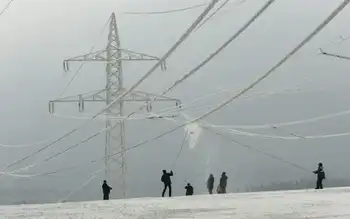Electrical Safety Authority Recognizes Eaton Leadership in Worker Safety
Arc Flash Training CSA Z462 - Electrical Safety Essentials
Our customized live online or in‑person group training can be delivered to your staff at your location.

- Live Online
- 6 hours Instructor-led
- Group Training Available
Eaton Electrical Safety Award highlights Ontario Electrical Safety Authority recognition for worker safety, electrical safety compliance, and the I Choose Zero program, honoring Eaton's training, field service practices, and injury prevention across power systems operations.
Key Points
Recognition by Ontario's safety authority for Eaton programs to prevent electrical injuries and improve worker safety.
✅ Zero lost time injury goal via I Choose Zero program
✅ Mentor training and ongoing health and safety education
✅ Field service safety practices across power systems
Power management company Eaton was honored for its dedication to worker safety by the Ontario Electrical Safety Authority during its annual award program, reflecting broader industry recognition such as the Medicine Hat safety honor seen recently. Eaton’s Electrical Services and Systems team was one of four award recipients commended for its efforts in helping keep Ontario-based workers safe from electrical harm, a priority underscored by a worker electrocution case reported in Ontario.
“At Eaton, safety comes first. This award recognizes that culture and commitment,” said Steve Boccadoro, senior vice president and general manager, Electrical Canada, at Eaton. “We are proud of our efforts to enhance safety that helped the Eaton Electrical Services and Systems team achieve one million hours without a lost time injury from August 2015 to January 2016, and are pleased to share this award with our employees.”
The Electrical Safety Authority recognized Eaton’s “I Choose Zero” safety program efforts to achieve the goal of zero lost time due to injuries, align with other national safety awards across the sector, and enhance overall personnel safety in the workplace and at home. Eaton’s electrical safety efforts include mentor training programs, ongoing health and safety education, and its vigorous approach to safety in the field.
“We have a robust and systematic approach to electrical safety and continue to invest in the education, programs and innovation, alongside federal investments in the electricity workforce, to enhance safety for our employees and customers,” said John Stampfel, vice president and general manager, Electrical Engineering Services and Systems Division, Eaton. “It is our commitment to safety and knowledge of electrical power systems that has enabled our record of successful projects that help to modernize aging electrical systems and build new ones not only in Ontario, but across the Americas.”
Eaton has one of the largest and most experienced teams of power system engineers and field service specialists in the industry, even as the sector works to attract more young Canadians to electricity careers in the years ahead. Eaton's Electrical Engineering Services and Systems team offers a comprehensive portfolio of services tailored for every stage of a power system’s life cycle, whether design, build or support. To learn more, visit www.eaton.com/service.
Eaton’s electrical business is a global leader with expertise in power distribution and circuit protection; backup power protection; control and automation; lighting and security; structural solutions and wiring devices; solutions for harsh and hazardous environments; and engineering services. Eaton is positioned through its global solutions to answer today’s most critical electrical power management challenges.
Eaton is a power management company with 2015 sales of $20.9 billion. Eaton provides energy-efficient solutions that help our customers effectively manage electrical, hydraulic and mechanical power more efficiently, safely and sustainably. Eaton has approximately 95,000 employees and sells products to customers in more than 175 countries. For more information, visit www.eaton.com.











